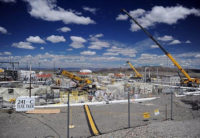Recession and Politics Impact Workers’ Comp
Recession has not been good for the construction industry, but it’s helping to keep workers’ compensation rates down, say insurance and contractor executives. In the year that ended last June, 28 states filed for rate decreases, while nine filed for increases, says Peter Burton, senior division executive for state relations for the National Council on Compensation Insurance.
Since June, 13 states have already sought decreases, seven have filed for hikes, and one state had no change. Declining injury levels, now at an all-time low, have helped push rates down for the last 15 years, says Burton. Employer focus on safety and more workplace automation also have been key drivers.
Further, the recession has generally favored retention of more experienced and better-trained workers, resulting in fewer injuries, Burton adds. Even so, higher-than-expected unemployment in some industry sectors has added new stress for workers, distracting their safety focus in some cases, says Mary Ann Krautheim, client strategy officer at Aon Risk Services, Stamford, Conn. Health- care reform is another unknown that probably will affect rates, although it is unclear whether it would drive them up or down, says Burton. Meanwhile, rising health-care costs are putting upward pressure on rates, Krautheim says.
In some states in which reforms had driven rates down, costs are rebounding, Burton says. Florida saw an 8.3% increase last year, the first since 2003. Rates dropped about 60% after reforms were implemented, but savings have been wrung out, he says. Oklahoma passed reforms in 2009, and Montana is considering them this year. Midterm elections and races in 2011 and 2012 “could result in a sweeping number of new insurance commissioners,” Burton says.
Federal legislative issues also could affect workers’ comp rates, says Douglas Holmes, president of Strategic Services on Unemployment and Workers’ Compensation, a Washington, D.C., group focused on employer concerns. Congressional attention is on links between medical costs, indemnity payments and the number of claims filed, he says. Congress also is looking at whether injury levels have truly dropped or if injuries are just less severe, Holmes adds.
Further, the aging workforce is generating more attention to the intersection between workers’ compensation settlements that include future heath-care costs and Medicare and Social Security disability claims, Holmes says. Medicare is a secondary payer on workers’ comp claims, so reporting requirements will increase in June 2011 to help the government keep track. “It’s tied to concerns about overspending,” he says. “Medicare is trying to assess the number of workers’ compensation awards that involve individuals who are Medicare-entitled.” Legislation pending in Congress addresses Medicare set-asides for workers’ comp settlements.
Steve Lidz, senior vice president for construction risk management at Chartis Insurance, New York City, says that contractors’ involvement on new and different types of projects could generate safety risks. “It gives us great concern,” he says. But Mike Kennedy, general counsel of the Associated General Contractors, says that, even in a more-competitive market, owners are focused on quality. “You can’t have quality without safety,” he says.





